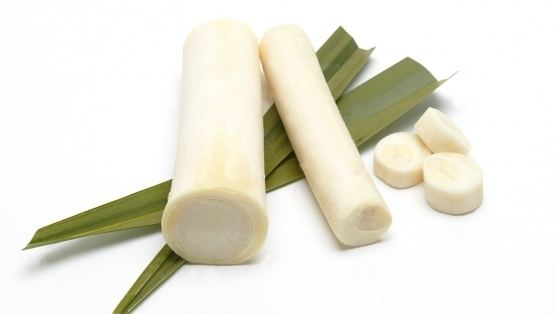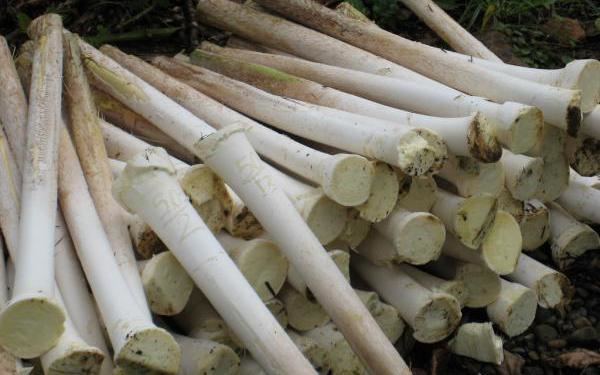 | ||
Similar Peach Palm, Catupiry, Olive, Requeijão, Pastel | ||
Heart of palm tree to table
Heart of palm is a vegetable harvested from the inner core and growing bud of certain palm trees (notably the coconut (Cocos nucifera), Palmito Juçara (Euterpe edulis), Açaí palm (Euterpe oleracea), sabal (Sabal spp.), pupunha and pejibaye (Bactris gasipaes) palms). Harvesting of many non-cultivated or wild single-stemmed palms results in palm tree death (e.g. Geonoma edulis). However, other palm species are clonal or multi-stemmed plants (e.g. Prestoea acuminata, Euterpe oleracea) and moderate harvesting will not kill the entire clonal palm. Heart of palm may be eaten on its own, and often it is eaten in a salad.
Contents
- Heart of palm tree to table
- lan ling wang mv heart of palms english subbed
- Harvesting
- Nutrition
- References

An alternative to wild heart of palm are palm varieties which have undergone a process of adaptation to become a domesticated farm species. The main variety that has been domesticated is the botanical species Bactris gasipaes, known in Ecuador as chontaduro, in Brazil and Costa Rica as palmito, and in English as the peach palm. This variety is the most widely used for canning. Peach palms are self-suckering and produce multiple stems, up to 40 on one plant, so harvesting several stems from a plant is not so expensive because the plant can live on. Another advantage it has over other palms is that it has been selectively bred to eliminate the vicious thorns of its wild cousins. Since harvesting is still a labor-intensive task, palm hearts are regarded as a delicacy.

As of 2008, Costa Rica is the primary source of fresh palm hearts in the US. The Edible Palm Company located in Orlando Florida has been the largest importer of sustainably farmed Fresh Hearts of Palm from Costa Rica to the United States since 2002. Peach palm is also cultivated in Hawaii, and now has limited distribution on the mainland, primarily to the restaurant trade. Florida's wild Sabal palmetto or cabbage palm was once a source of hearts of palm but is now protected by conservation law.

lan ling wang mv heart of palms english subbed
Harvesting
When harvesting the cultivated young palm, the tree is cut down and the bark is removed leaving layers of white fibers around the center core. During processing the fibers are removed leaving the center core or heart of palm. The center core is attached to a slightly more fibrous cylindrical base with a larger diameter. The entire cylindrical center core and the attached base are edible. The center core is considered more of a delicacy because of its lower fiber content.
Nutrition
Hearts of Palm is rich in fibers, potassium, iron, zinc, phosphorus, copper, vitamins B2, B6, and C.[1]
